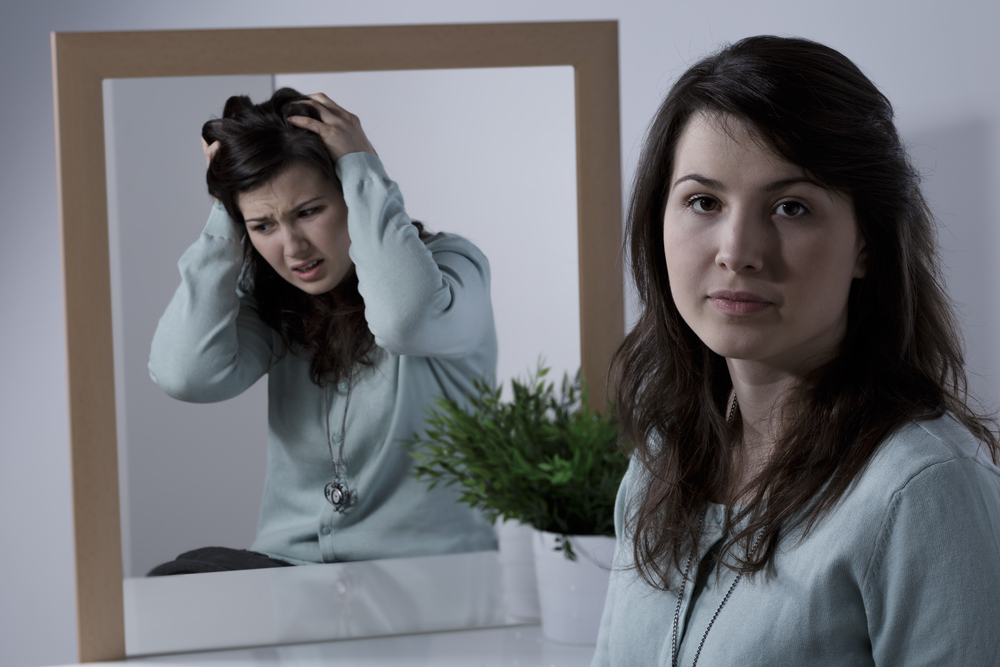
An Overview of Obsessive Compulsive Disorder and Why It Can Be Dangerous

Obsessive compulsive disorder [OCD] was earlier considered as an anxiety disorder. However, it is presently classified as a unique condition. It is a disabling illness that has the potential to trap people in cycles of repetitive thoughts and behavior. People who suffer from OCD are often haunted by repetitive and distressing thoughts, fears, and obsessions that they are unable to control.

Andrey_Popov/Shutterstock
The anxiety created by the thoughts leads people to develop an urgent need to perform routines and rituals of a particular kind. People with OCD regularly go through these rituals simply to prevent the onset of the obsessive thoughts or to make them go away.
The people receive temporary relief from the rituals they perform. Also, they are usually prepared to repeat the ritual again when the thoughts return. OCD can progress to a level where the individual will begin to lose hours during the day as OCD interferes with normal activities. People who are affected are unable to stop their obsessions or compulsions despite having the understanding they are being senseless or unrealistic.
[su_quote class=”cust-pagination”]“People with mental illnesses aren’t wrapped up in themselves because they are intrinsically any more selfish than other people. Of course not. They are just feeling things that can’t be ignored. Things that point the arrows inward.” — Matt Haig[/su_quote]

Andrey_Popov/Shutterstock
The Symptoms Of Obsessive Compulsive Disorder
The symptoms of OCD are usually obsessions and compulsions. They may also vary from one person to another. Some common symptoms include fears, such as the fear of the following:
- Dirt and contamination by germs.
- Causing harm to others and making mistakes.
- Behaving in socially unaccepted manner and being embarrassed.
- Thinking evil or sinful thoughts.
- Need for order and similarities.
- Excessive docs in mind and needing constant reassurance.
People with OCD also have a set of compulsions which include:
- Repeatedly showering, bathing or washing their hands.
- Refusing to shake hands or touch commonly used objects.
- Repeatedly checking things such as locks and stoves.
- Consistently counting mentally or loudly when performing routine tasks.
- Arranging things in a particular manner regularly.
- Having their food in a specific order.
- Collecting or hoarding items which have no value.
- Repeating specific words, phrases, and prayers.
- Being stuck on thoughts, images or words that are disturbing and will not go away and interfere with their sleeping pattern.
What Causes Obsessive Compulsive Disorder

Andrey_Popov/Shutterstock
The precise reasons for the development of OCD haven’t been identified until this moment. However, research has provided information that environmental factors along with biological reasons may be involved in the onset of this condition.
Information is also available that OCD can be hereditary and can run in families. This is a clear indication that OCD can be inherited. Studies have also found links between a type of infection that is caused by the Streptococcus bacteria and OCD. This infection if found to be recurrent and if left unchecked, may need to the development of OCD and various disorders among children.
Environmental factors can also trigger the condition of OCD. Other environmental factors have the potential to worsen the symptoms, such as:
- Abuse.
- Changes in living conditions.
- Illness.
- The death of loved ones.
- Relationship concerns and work or school related issues or changes.
What is the prevalence of OCD?
Within the United States, approximately 3.3 million adults and 1 million children and adolescents suffer from OCD. The problem initially begins during childhood and progresses into adolescence and adulthood. OCD does not distinguish between men and women. It also affects people of all races and socioeconomic backgrounds.

Photographee.eu/Shutterstock
Diagnosis
No lab tests are available for the diagnosis of OCD. Therefore, the doctor will base his or her findings after an assessment of the symptoms of the patient. Diagnosis is also based on the time the patient spends performing their ritual behaviors.
What Is The Treatment?
OCD cannot disappear by itself. Doctors usually consider treating this condition using a combination of medications and cognitive behavior therapy. In certain cases, they may use electroconvulsive therapy for the treatment.
[su_quote class=”cust-pagination”]“People with OCD including myself, realize that their seemingly uncontrollable behavior is irrational, but they feel unable to stop it.” — Abhijit Naskar[/su_quote]
While there are no preventive measures available for OCD, the condition can be treated with medication and cognitive behavioral therapy or a combination of both. Perhaps the best part is that OCD is a condition that can be treated effectively.
More in Mind & Mental
-
`
Why Adults With ADHD Are 3x More Likely to Develop Dementia
We have all heard of ADHD, haven’t we? Hyper kids, distractions galore, restless minds – these are images we often associate...
December 11, 2023 -
`
Signs of Emotional Connection in Relationships
Building a strong connection with someone isn’t just about being in sync or sharing hobbies—it’s about that deeper bond, where you...
December 4, 2023 -
`
Hollywood’s Shortest Marriages: Britney Spears, Carmen Electra & More!
In the glitzy world of Hollywood, where fairy tales often unfold on the silver screen, there exists a flip side—a realm...
December 3, 2023 -
`
The Surprising Benefits of Unplugging
In today’s hyper-connected world, where we are constantly bombarded with notifications, messages, and the allure of social media, disconnecting may seem...
November 26, 2023 -
`
How “Looking Your Best” Improves Our Wellbeing
Most of us have had moments standing in front of our closet, deciding on an outfit for the day. And we...
November 15, 2023 -
`
Therapy? Medication? What Are the Treatments for PTSD
Post-Traumatic Stress Disorder (PTSD) is a common after-effect of traumatic events. It can be a debilitating condition, but the good news...
November 7, 2023 -
`
Meet the Woman Who ALMOST Married Barack Obama
Barack Obama’s life has been a captivating narrative, often told and retold, with each revelation adding layers of intrigue to his...
November 5, 2023 -
`
The Rise of Caviar Bumps, Thanks to Gen Z
In an intriguing twist of culinary culture, millennials and Gen Zers are drawn to an unusual indulgence – fish eggs, or...
October 28, 2023 -
`
Everything You Need to Know About Acid Reflux, Heartburn and GERD
Ever had that burning-in-the-chest sensation after a meal? Or perhaps you have lain awake at night with an odd sour taste...
October 17, 2023















You must be logged in to post a comment Login